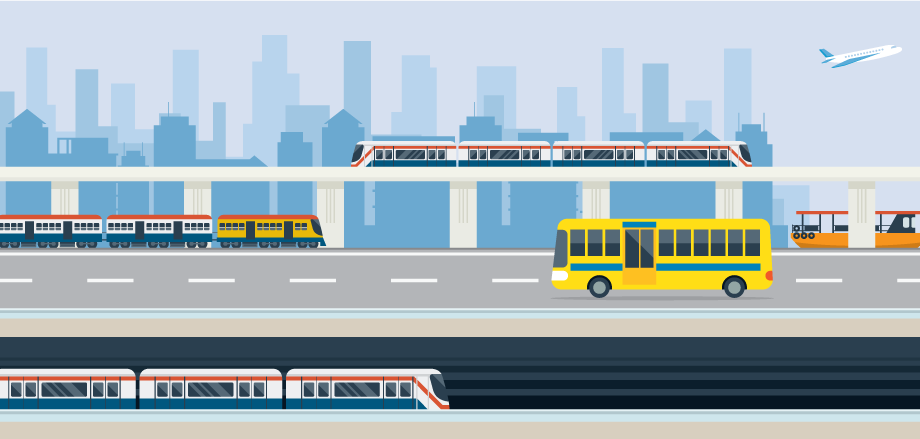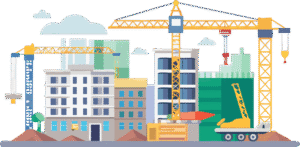Efforts to boost housing production and encourage sustainable communities often include transit-oriented development initiatives and incentives. Transit-oriented development (TOD) is a trend toward integrated urban spaces that allow for people, buildings, and public space to coexist, with easy cycling or walking access and transit service to job-rich city areas. In order to spur housing production in alignment with transit-oriented urban design, federal and state governments have implemented various incentives you can take advantage of for your multifamily projects.
Leveraging transit-oriented development incentives can have many benefits for your business, helping your team keep costs down and expedite timelines on complex development projects. Investing in transit-oriented buildings will offer longer-term benefits for your business as well, helping ensure projects are well-positioned among climate-conscious residents and ensuring buildings are climate resilient. You can also use transit-oriented projects as an opportunity to foster advantageous private-public partnerships and bolster stakeholder buy-in on the community level.
Here’s everything you need to know about transit-oriented development incentives, from fast-tracking the permitting process to taking advantage of tax credits, grants, or other financial incentives:
Understanding Transit-Oriented Development (TOD)
Transit-oriented developments are compact, walkable, pedestrian-oriented, mixed-use communities centered around bus and train routes. Inclusive transit-oriented developments are an important component of environmentally friendly community planning, ensuring long-term sustainability and equity in cities. Traits your transit-oriented development projects should prioritize include walkable neighborhoods, non-motorized transport such as cycling, and high-density structures with connection via biking or walking paths. Buildings should be mixed-use, and include units for varying income levels and demographics.
Many transit-oriented development projects can be adaptive reuse, or the repurposing of defunct retail, industrial, or office space for housing, or brownfield developments that have cleaned up and reworked contaminated sites. The projects are often compact, reducing commutes for residents and encouraging use of public space to foster community interactions. By regulating parking or road use, you can save money on lot space and reduce motor vehicle dependency.
The Benefits of Transit-Oriented Development
Successful transit-oriented community incentive programs benefit both developers and the larger community. The Federal Transit Administration’s TOD Pilot Program was designed to promote neighborhood revitalization, increase access to affordable housing, encourage an uptick in private/public investment partnerships, net economic returns for owners and businesses, boost ridership on public transit, as well as provide traffic congestion relief, improve air quality, and offer other environmental benefits. Similar to other types of high-density affordable housing, these projects can be instrumental in addressing the ongoing housing crisis. v
Transit-oriented development initiatives have successfully increased housing production in several high-demand markets where shortages are an immediate concern. Los Angeles’ City Planning Department’s Transit Oriented Communities (TOC) Affordable Housing Incentive Program was passed by voters in 2016. Since the program went into effect in 2017, more than 27,000 housing units have been permitted under the program. In 2019, 42% of all proposed new housing was expected to be permitted through the program. The TOD initiative has been an undeniable success in helping the city move toward its dual goals of bringing more units of housing to market and curbing motor vehicle emissions.
Boston is another city where the development and planning agency’s TOD efforts are successfully boosting housing production. In a historic rezoning policy, Charlie Baker signed into law a multifamily development initiative called the Massachusetts Bay Area Transportation Authority (MBTA) Communities Law, which requires communities with an MBTA station or a community with a station to have at least one zoning area where multifamily housing is allowed by right. The law is a vital first step in increasing housing production and provides a unique opportunity for developers to pursue high-density multifamily projects across the state.
Key TOD Incentives For Developers
Financial Incentives
Building residential projects in key transit corridors can come with major financial benefits for your team. The nature of these projects – high-density means more units to rent and transit-centric design means lower parking minimums – bode well for faster stabilization and higher returns. Density bonuses, which allow you to increase the number of units allowed in a given project in exchange for including more affordable housing units or incorporating transit stations into the project, are also common among projects of this sort.
Tax credits, abatements, grants, and subsidies are also regionally available to help get transit-oriented projects off the ground. Amid slow capital markets, these resources can prove especially valuable as you look for alternative sources of funding. Transit-oriented projects that meet certain criteria are eligible for the Federal Department of Transportation’s RRIF TOD and TIFIA TOD loan programs. State and local governments are likely to offer additional funding to developers willing to take on these projects depending on location.
Zoning Changes and Expedited Permitting
Zoning regulations in state and local governments are also being shifted to boost housing production and better accommodate transit-oriented development. Identifying areas with zoning policy that favors TOD can also help you find markets with growing opportunity and high demand. Changes to zoning laws in key markets to allow for increased affordable housing and zoning changes can help you pursue larger-scale multifamily development projects.
Since many state and local governments are including transit-oriented developments as part of their sustainable urban planning initiatives, these projects are eligible for an expedited permitting process in many jurisdictions. Faster permitting can significantly speed up the construction process, resulting in significant cost savings and higher returns.
Public-Private Partnerships
Transit-oriented development encourages public-private partnerships, as this kind of housing helps government agencies build infrastructure, shape sustainable communities, and implement decarbonization efforts. Public-Private partnerships (PPPs) with transit authorities and other government stakeholders will benefit your team, allowing you to share risk and access funding sources not available to exclusively private entities. PPPs also allow your team to leverage expertise from government agencies, and collaboration with the public sector can help bolster public support and ensure community stakeholders are on board. Fostering public-private partnerships can have long-term benefits for your business as well, as you’ll be able to rely on these positive relationships as you pursue future projects.
Long-term Sustainability Benefits
Investing in transit-oriented development projects can have long-term benefits for your portfolio. You can include these projects as part of your firm’s larger Environmental, Social, and Governance (ESG) strategy and goals. Government policies are shifting to require more reporting around environmental and sustainability metrics. At the same time, residents are also increasingly seeking out sustainable buildings with environmentally friendly features. Buildings that offer sustainable features, such as high-efficiency appliances, EV car charging stations, and the ability to monitor energy usage, are in high demand. For all these reasons, transit-oriented development projects will have a long lifespan in your portfolio.
Leveraging Technology to Facilitate TOD
Transit-oriented development projects are often high-density, mixed-use, and multifamily residential buildings. Modern real estate development software is helping forward-thinking firms pursue complex development projects with multiple methods of funding. Northspyre’s purpose-built, single software solution offers flexible reporting and easy-to-build draw requests, empowering you to work well with transit authorities or other government agencies. The platform leverages automation and data analytics to index all contracts, proposals, lien waivers, and more into easily digestible dashboards, increasing visibility among all stakeholders. By investing in the appropriate development software, you can ensure predictable and successful outcomes on all your multifamily and transit-oriented projects.
Learn More About Northspyre
Northspyre is designed by and for developers, using automation to reduce manual data entry, increase productivity, and maximize your returns from pre-development to stabilization. The platform can help you keep budgets on track as you pursue complex, high-density residential projects, informing you of opportunities to save money and eliminate overspending. You will be alerted to potential exposures, spend forecasting, and remaining contingencies to ensure projects come in on time and under budget.
Download our white paper Driving the Next Decade of Development, State-by-State to learn how you can identify top opportunities to invest in or build residential projects as zoning policies change.



